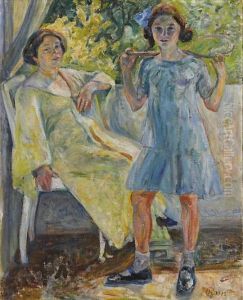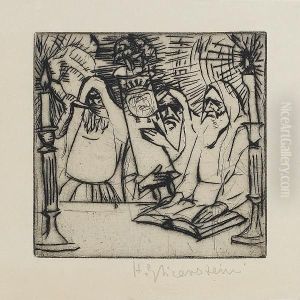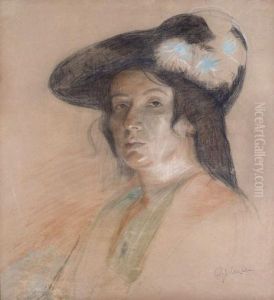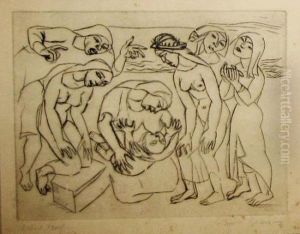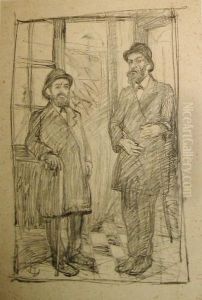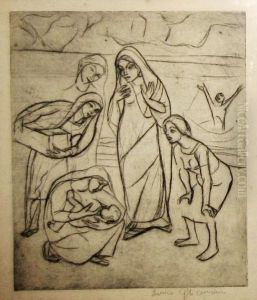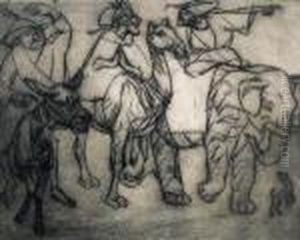Enoch Henryk Enrico Glicenstein Paintings
Enoch Henryk Enrico Glicenstein, born in 1870 in Szczebrzeszyn, Poland, was a significant figure in the world of sculpture during the late 19th and early 20th centuries. He grew up in a Jewish family in the Russian Empire, where his early life was steeped in the rich cultural and religious traditions of his community. Despite the challenges faced by Jews in Eastern Europe during this period, Glicenstein's passion for art led him to pursue a career that would see him become one of the pioneering figures in modern sculpture.
Initially, Glicenstein studied at the Warsaw Academy of Fine Arts, honing his skills and developing a distinctive style that blended classical techniques with modernist ideas. His talent and ambition drove him to further his studies abroad, leading him to Italy, a country renowned for its artistic heritage. Settling in Rome, he immersed himself in the study of the Italian masters, drawing inspiration from the Renaissance and Baroque periods while infusing his work with a contemporary sensibility.
Glicenstein's sculptures are known for their emotional depth and technical precision. His works often explored themes of Jewish heritage, family, and the human condition, reflecting both his personal experiences and the broader social changes of his time. He achieved international recognition for his contribution to modern sculpture, participating in numerous exhibitions across Europe and the United States.
Despite the acclaim, Glicenstein's life and career were profoundly affected by the rise of fascism in Europe. With the outbreak of World War II and the implementation of the Holocaust, he, like many Jews, faced persecution. In 1942, his life was tragically cut short when he was killed during the Holocaust. His death marked the loss of a significant voice in modern art, but his legacy continues to be celebrated for its contribution to the evolution of sculpture and for its poignant exploration of identity, heritage, and resilience.
